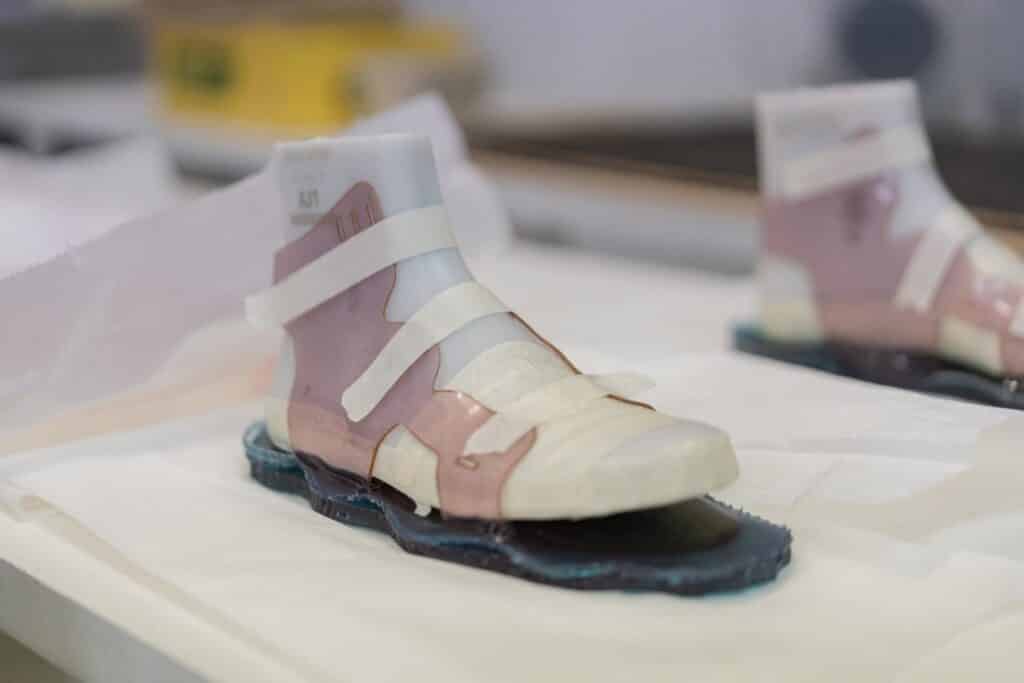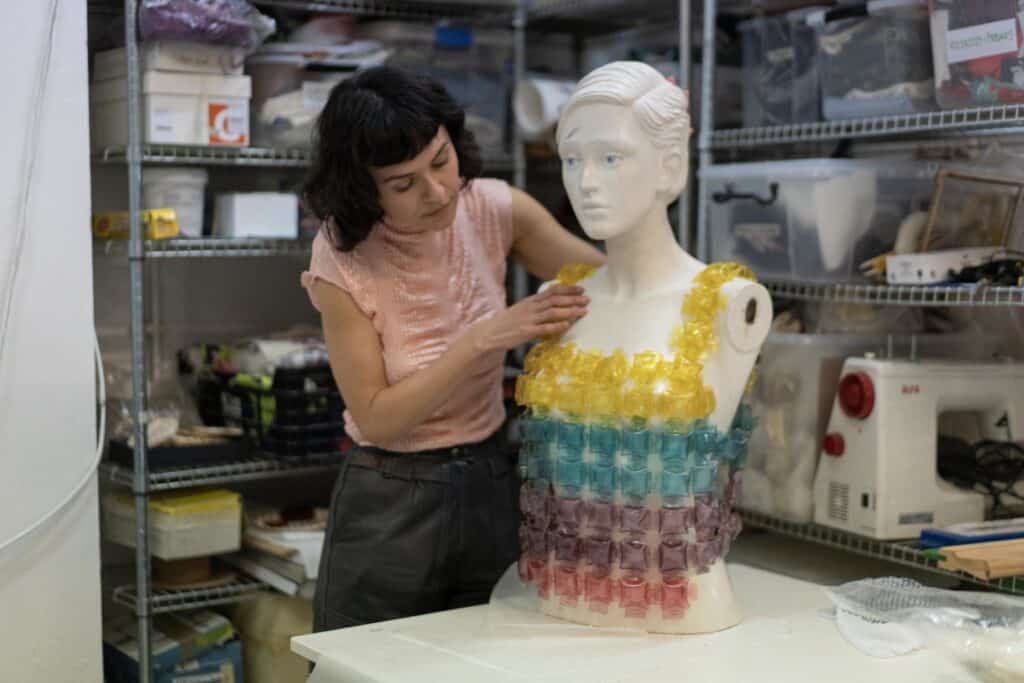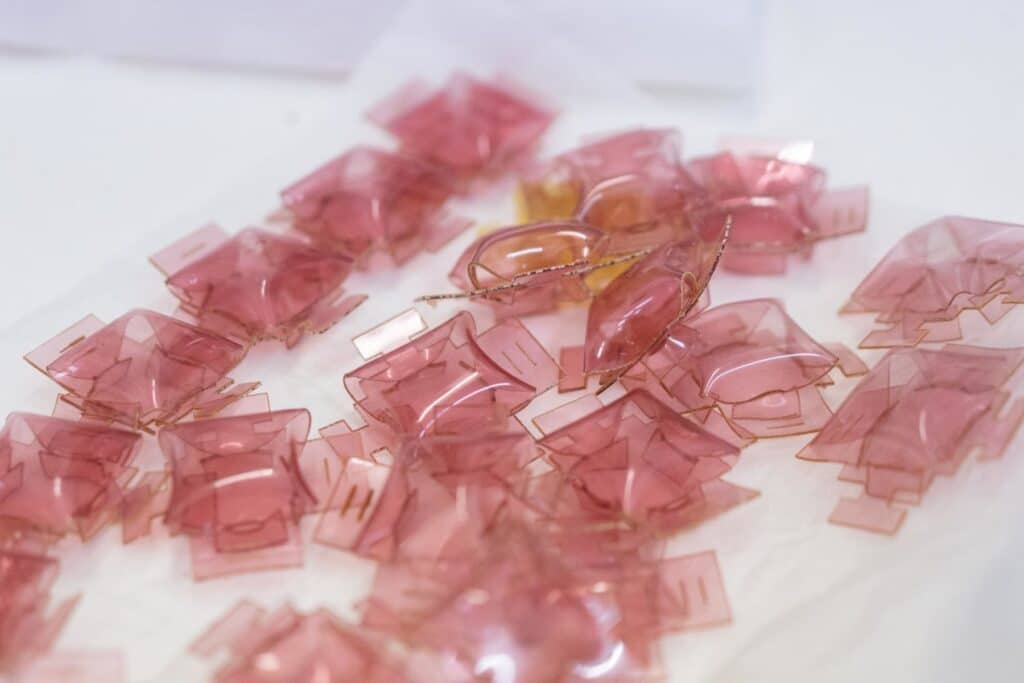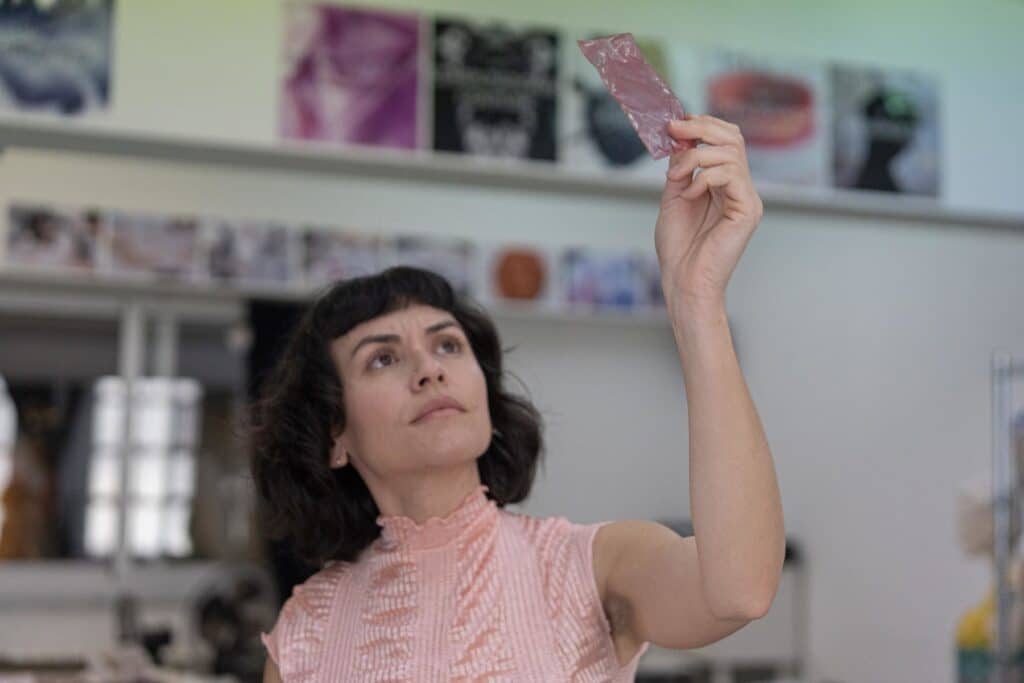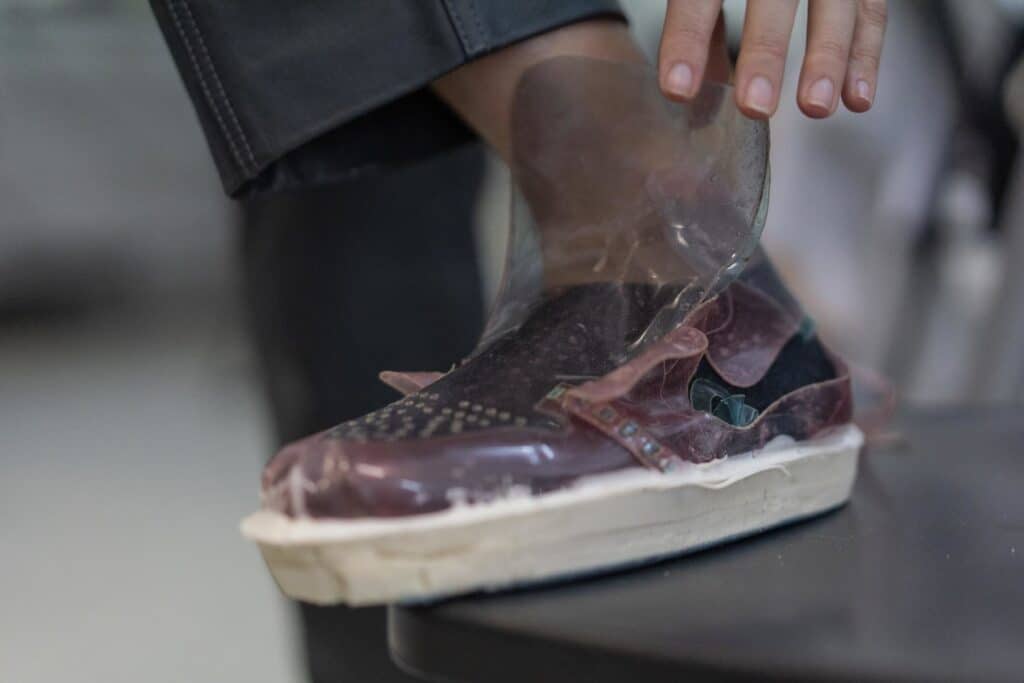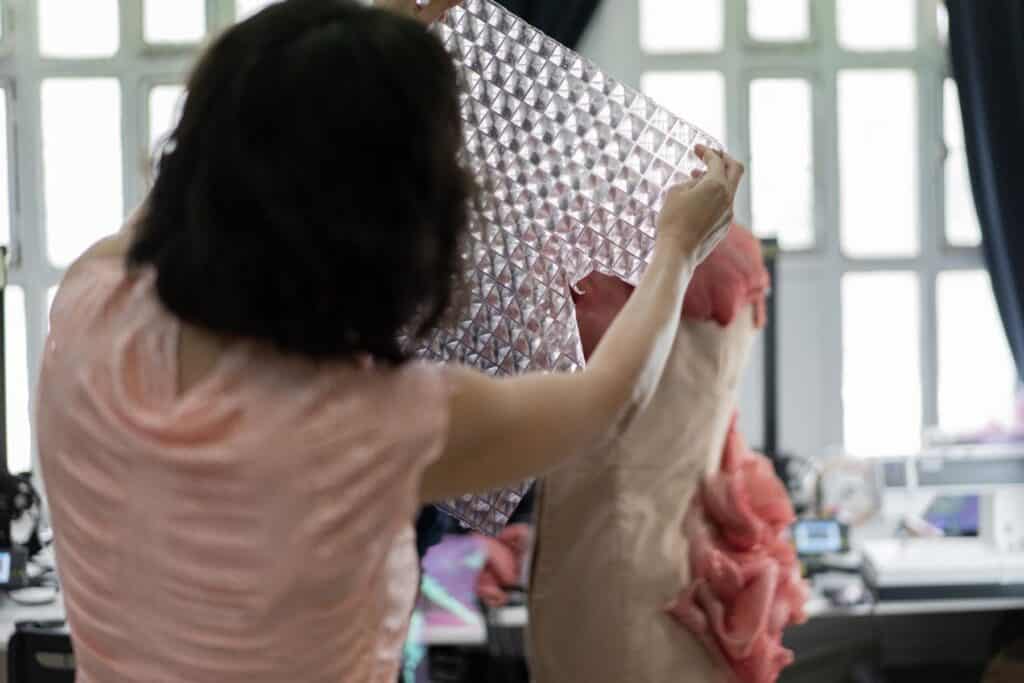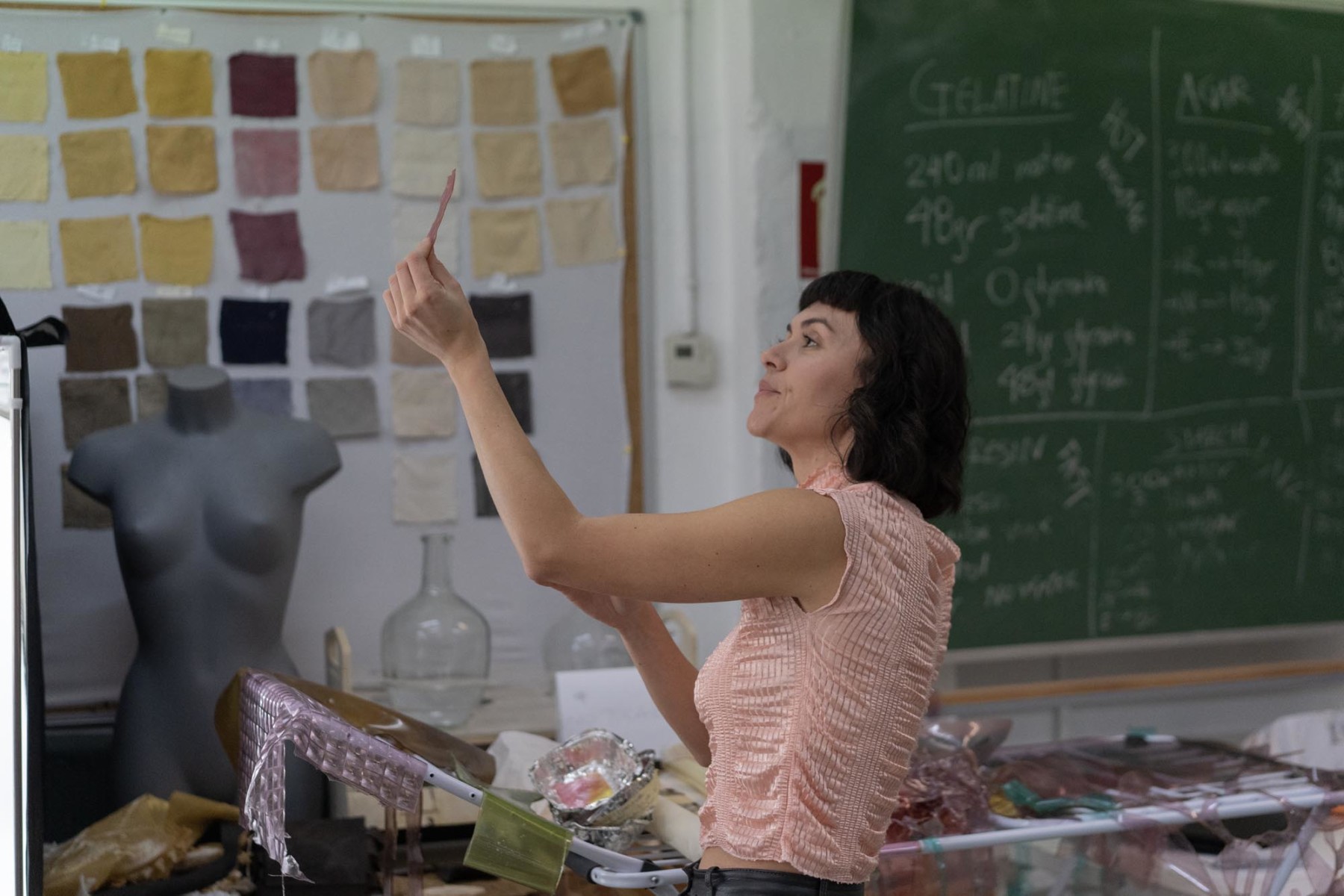
Forever and ever? Not when it comes to ‘Fluid Fashion’
Bioplastic garments as an accessible solution to the wear-it-once culture.
Introducing Olivia Cueva, a multidisciplinary artist, creative technologist and storyteller from Berkeley, California. In the following interview, she shares her journey through Fabricademy, talks about her interest in bioplastics and goes in depth into her final project Fluid Fashion – a set of colorful bioplastic garments that are all naturally dyed and made to return safely to the earth.
1. Tell us a bit about yourself. What did you do before you joined Fabricademy?
I was a radio journalist, a creative technologist, and community tech education leader. Now living in Barcelona for Fabricademy, I’m creating bioplastic fashion that can return safely to the earth when it is no longer in use.
2. Why did you choose to do Fabricademy?
When I learned about it, I was just transitioning out of a stressful full time job and beginning to explore my interests in fashion and sustainability. I chose it because it seemed like the perfect program for me: combining fashion, technology, biology, and climate sustainability.
3. When did you feel like it was time to apply?
Last year, when I was filled with dread at the thought of going back to work and tired of living in the USA. I realized that learning to make bio textiles was important to my future work. I was so fascinated by the idea that Fabricademy was this global program and there were nodes all over the world. I always wanted to go to a Spanish speaking place because I really needed to practice my Spanish. So I was thinking about going to places in Latin America but I eventually decided to come to Barcelona because I knew that one of the founders, Anastasia Pistofidou, was here and I knew that there would be a cohort of other peers here at Fab Lab Barcelona.
4. What tools and techniques have you explored so far?
I have learned everything about how to make natural dyes and how to make my own biomaterials here. That was a huge thing I had never used before. Also utilizing the program Rhino. I’ve definitely been on the laser cutter all the time and I’ve used the CNC to build molds for the shoes that I’m making for my project. We’ve also learned a lot of different cool techniques to manipulate fabrics and to enhance fashion and textile design.
5. When did you realize you had an idea you could develop here?
I came into Fabricademy wanting to focus on creating bio materials. Before this, I was exploring making garments from plastic, even though I was very aware of the toxicity. The things I like about plastic is that there are a lot of really cool colors and textures, and it can create these bold looks that you’ve never really seen before that can’t be replicated. But the problem with plastic is it’s not very functional and it’s the worst thing for the planet. It’s like the cancer of the earth. Not only is it unhealthy for us and for the planet but it will never go away. I was having this dilemma because I wanted to work with this material because it’s so beautiful and I like the way that I can manipulate it, but it’s also super bad for the planet. So how can I remedy that? When I saw that Fabricademy taught us how to make bioplastics and I learned that I could achieve the same translucency, the same bright colors, but all naturally, I knew that I wanted my final project to focus solely on creating bioplastic garments that are safe for people and our planet.
We already have too many things on the planet, we don’t need more things that last forever. We need things that can be able to return safely to the earth if it rains.
6. Tell us a bit more about your final project.
My final project is called Fluid Fashion. It’s a set of bioplastic garments (top, bottom, sneakers and fake nails) that are all naturally dyed and designed for minimal wear. It’s made to return safely to the earth, once it’s done being worn. The looks are really colorful and bold. I imagine them for people who like to play with both masculine and feminine aesthetics. Calling it fluid fashion is not just in terms of its life cycle, but also stylistically in terms of gender non conforming, gender expansive. It’s for those who like to express themselves in all different kinds of styles and ways.
My inspiration behind it were a couple of things. I was thinking about how people are wearing their clothes less and less but buying clothes more and more. So of course, that’s contributing to tons of textile waste. I was also looking at the plastic issue – I was designing things with plastic but plastic is horrible for the planet. I started to explore the idea of designing for this wear-it-once culture that was actually healthy for the planet, instead of shifting the entire culture because that’s gonna take a long time. I learned how to work with bio textiles, specifically gelatin bio textiles, whose ingredients have nutrients for the planet as well. You can also easily make all of this in your kitchen and that’s what I was also really interested in doing. I come from a place of educational accessibility so I wanted to work with things that would be accessible to me, but also to others, even after I was done at Fab Lab.
7. Any struggles during the making of your final project?
So many struggles! The one that’s most prominent now is mold. With what I’m using, it takes about seven days to really cure, solidify and dry into the kind of textile that I want to use. What happened recently is the humidity got up and it started to grow and I lost about three or four textiles to mold. I learned that if I catch it quick enough, I can use alcohol, take it out of the cast and let it dry. What has been so amazing about this project is that having something like mold growing on your textile just reminds you that the only time that we’re really on is the earth’s time. We can’t rush it, we can’t fight it or hope it will go faster. When the humidity is up, things are gonna grow, new life will grow and it might not be the life that you want, but it’s ok. It’s just gonna go how it goes. That’s been really humbling to me. A reminder to just be patient, to slow down. You’re gonna get where you’re gonna get and hopefully, it turns out really great. It’s been such a good process for me to just be reminded of that.
8. Did your peers help you in prototyping your idea?
Yes, every step of the way. Everyone is so supportive and committed to helping one another. Everyone comes from different career and cultural backgrounds, so we were all able to help each other and I was able to ask, what do you think about this design? And got feedback constantly. It’s such an amazing small team. I’m coming away with lifelong friends and I hope that we can all continue to work together and collaborate in the future.
9. Do you feel that you’re now part of a network?
I’m part of the Fabricademy network, not only here in Barcelona but all over the world! I feel like I can travel to any Fabricademy hub and be welcomed. I look forward to staying in touch with my peers in the global network and supporting and collaborating in the future.
What has been so amazing about this project is that having something like mold growing on your textile just reminds you that the only time that we’re really on is the earth’s time.
10. Who would you recommend Fabricademy to?
I would recommend this course to anyone interested in creating new materials with new technologies for a better future. I think that it really lives at the intersection of textiles, biology, technology and sustainability.
11. How do you see your future after studying here?
I’d love to continue my work in footwear and sneaker design and experiment more with making sustainable bio sneakers. I just feel like there’s a lot of potential to go further. I’m thinking about designing for impermanence. We already have too many things on the planet, we don’t need more things that last forever. We need things that can be able to return safely to the earth if it rains.
12. If you were a material, which one would you be and why?
Probably the most neon, colorful, transparent, flexible, textured bioplastic you’ve ever seen!
Curious to learn more?
Read everything there is to know about Fabricademy!
